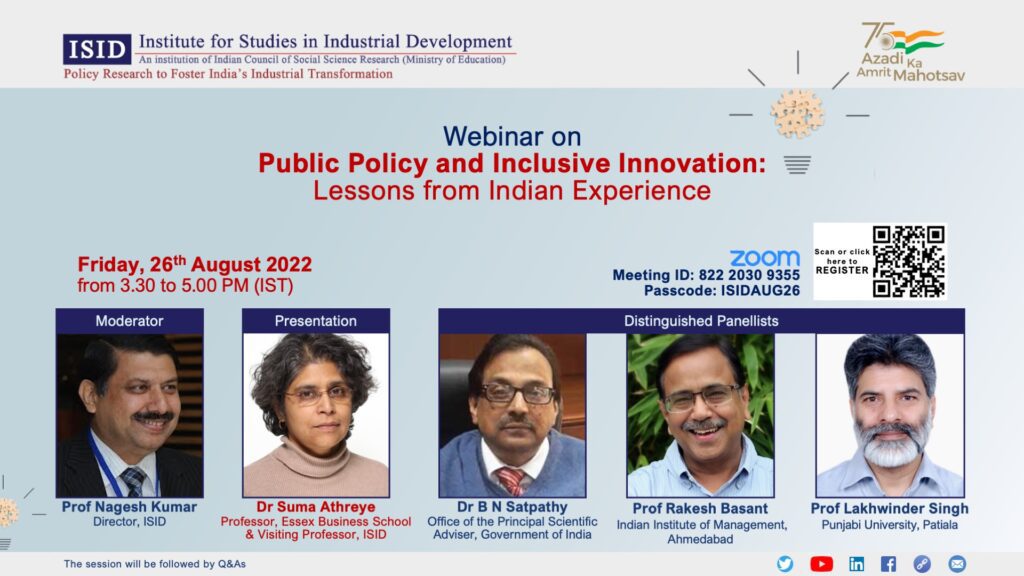
The Institute organized a webinar on “Public Policy and Inclusive Innovation: Lessons from Indian Experience” based on research work by Dr. Suma Athreye, Professor, Essex Business School; and Visiting Professor, ISID on August 26, 2022. This paper argues that innovations for the poor (inclusive innovation) are in short supply because of poor “market access” due to underdeveloped or missing markets in rural areas where most of the poor are located, and because of the poor “technology access” due to the absence of domestic innovative capability and the high costs of adapting technology products for the poor population. Based on a review of 58 recent cases of inclusive innovation, which have been discussed in the media, in policy circles, and the academic literature, we identify the agency and areas where inclusive innovations have been successful and areas where significant gaps exist. Our findings reveal that domestic private firms, MNEs, and other non-state actors have played a significant role in introducing pro-poor innovations but have mostly concentrated their effort in areas of low market access and/or high technology access. Inclusive innovation efforts are scarce in situations where technology access is low, although multilateral charities and agencies are targeting such areas. Policy support for inclusive innovation in India has taken the form of financial provision but this should be complemented by more R&D in public sector bodies and public investments in marketing infrastructure. In this sense, the constraints to inclusive innovation mirror the overall situation regarding innovation in India. The presentation was followed by discussions initiated by Dr. B. N. Satpathy, Office of the Principal Scientific Advisor, Government of India; Prof. Rakesh Basant, Indian Institute of Management, Ahmedabad; and Prof. Lakhwinder Singh, Punjabi University, Patiala. The webinar was moderated by Prof. Nagesh Kumar, Director, ISID. Around 55 persons attended the webinar and more than 60 persons viewed it on YouTube till 30th September 2022.


